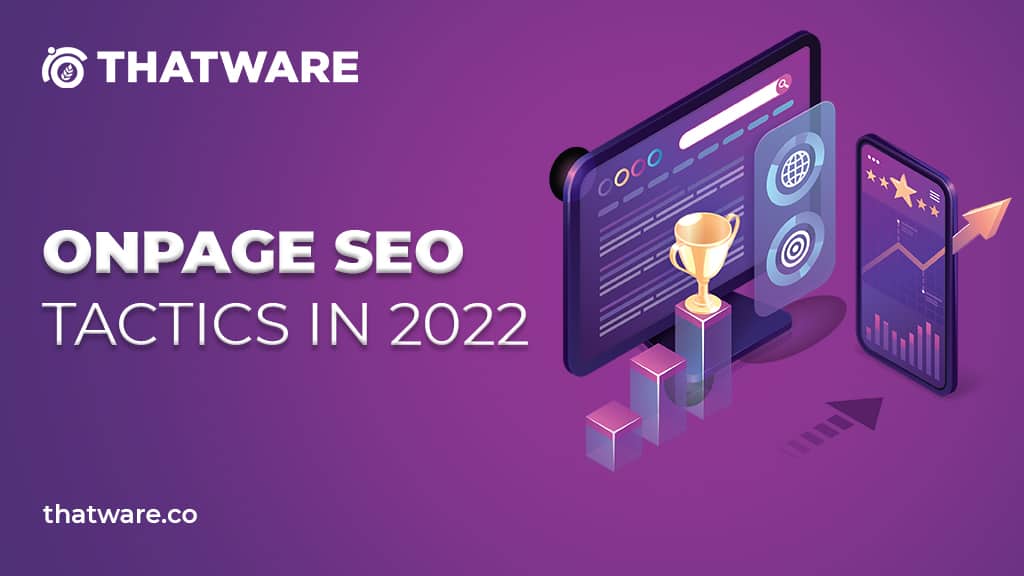So you’re going to add a new blog post or page to your website. You’re hoping that Google loves your page enough to rank it and that visitors enjoy what’s on your website enough to share and link to it. This onpage SEO checklist serves as a guide to ensure that each new page has the SEO fundamentals and best practices that Google uses to assess relevance.

The Best Ways to Create SEO-Friendly URLs
So you’re building a new site or considering rewriting your website’s URLs to assist your users and search engines better comprehend your site and its pages. When creating new URLs for websites, the following guidelines should be followed, and an SEO should be hired to work with your company to design the structure.
- Keep it brief – While a descriptive URL is crucial, decreasing length and trailing slashes will make your URLs simpler to copy, paste, or recall in the unlikely event that they were not bookmarked and will appear fully accessible in search results. Eliminate stop words, and the length should be no more than 100 characters.
- Use keywords — If your page aims for a certain term or phrase, add it to the URL. However, don’t try to pack in several keywords for SEO purposes; doing so will result in less useful URLs and may trip spam filters.
- Be Descriptive — Instead of using numbers or meaningless figures to categorize information, use genuine words and exclude any special characters.
- Use hyphens to separate words – Because not all search engines correctly read separators such as “_,” “+,” or “%20,” use the hyphen “-” character to separate words in a URL.
- Remove stop words – Stop words are often used or adjectives that might hinder your SEO efforts. Words like ‘of,’ ‘or,’ ‘the,’ and so on sabotage your SEO efforts since they take up valuable character space, especially when generating URLs. There are plugins (such as the Yoast SEO plugin) that can perform this automatically for your WordPress permalinks.
- Remove tracking parameters – If you must use tracking parameters on internal URLs to better analyze click-path or external marketing efforts, use the canonical tag and direct it to the URL without the tracking — this will avoid duplicate content concerns.
Best Practices for Google SEO Tagging
Google’s recommended practices for SEO tagging and metadata, as well as the website tags they value, have evolved substantially over the previous decade. Most of the elements, such as the meta keywords tag, have lost significance over time and do not influence rankings or content relevancy. There is still a worthwhile handful, such as the SEO metadata and tagging recommended practices listed below.
Best Practices for SEO Title Tags
Structure of SEO Title Tags
There are several views on building your title tag such that it has the most influence on rankings. Some think you should include your keywords; others say it doesn’t matter. We are on the latter’s side. Title tags should contain keywords, but they should also be conversational and not just a list of keywords.
Length of SEO Title Tag
Originally, the length of the title tag for SEO was 70 characters, including spaces; however, it was recently revealed that Google determines length by pixels rather than character count. Google determines the pixel width of title characters up to 512 pixels wide. Google truncates it and inserts an ellipsis when the title exceeds this limit.
Best Practices Description Tag
Structure of Description Tags
The easiest approach to think about the structure and what to include in your website’s description tag is to think of it as a paid search ad. The description tag’s content is designed to attract Google users to click on your listing by providing relevant information about what to anticipate on your web page.
Length of Description Tags
Meta descriptions can be any length; however, search engines often truncate excerpts larger than 160 characters. It is preferable to maintain the length of a meta description between 150 and 160 characters.
Best Practices for Page Content Optimization
When we speak about optimizing web page content, we are not referring to keyword density or just adding keywords. Optimizing structural, textual, and keyword components is one of the SEO cornerstones of optimizing page content.
Aside from ensuring that the content is not included within a flash, javascript, or an iframe and that text are not shown as an image, there are a few key areas to concentrate on. Let’s start with some structural notions – content hierarchy and variety – before delving into where keywords should be put.
Content Organization
A structured hierarchy for your web page also aids Google in understanding the topic hierarchy for your content, providing them with a better understanding of what your content should be ranked for.
H1, H2, and H3 tags describe chunks of material in a content hierarchy.
Content Variety
Using a variety of content types inside a piece of content, such as videos, photos, and lists, demonstrates enhanced engagement, social shares, and inbound links.
Use of SEO Keywords
After you’ve determined the ideal keywords for your website, the next question is where you should add your SEO keywords. They should incorporate keywords and phrases from the head, mid-tail, and long tail.
The usage of keywords in the H1 tag
• Make sure you have one H1 tag.
• The H1 tag should include your page’s major keyword subject (head term).
The usage of keywords in the H2 tag
• Ensure that you have a few H2 tags.
• These should be sub-themes of your major keyword subject and keywords from your secondary content topics (mid-tail keywords).
The usage of keywords in the H3 tag
Include a few H3 tags for every H2 tag.
These should be sub-topics related to your secondary keyword topic.
Include your tertiary content subjects (secondary mid-tail keywords).
Unless you’re digging deep into a topic, H3 tags aren’t always necessary.
Use of keywords in paragraphs
• Paragraphs should be brief, targeted, and digestible for readers — preferably 4-5 sentences long so that users are not overwhelmed.
• They should contain primary, secondary, and long-tail keywords — consider variety rather than density.
Best Practices for Image Optimization
• Add an ALT tag to each picture that describes the image.
• Give your image a name by describing it in two or three words – use hyphens to separate words.
Meta Directives and SEO Best Practices
If the new page replaces an existing page, use a 301 redirect to transfer link metrics to the old, relevant content.
Use the “rel=canonical” tag if there is duplicate material and closely resembles a more authoritative page.
Use the Robots.txt directive (meta name=”robots” content=”noindex, nofollow”) if you don’t want Google to index a page or if you don’t want link metrics to be transmitted via the page.
As a bonus, notify users and search engines.
Finally, you’ll want to make the page visible to visitors and search engines, as well as notify Google that you’ve added new material to your website.
Ensure you notify Google and users when you post new material by doing the following.
- Update your XML and HTML sitemaps using the new URL.
- Include at least one on-site link (if applicable) on the new page.
- Tweet about the new content and share it on social media.
- Retrieve the new page as Google from Google Webmaster Tools (Google Search Console). Once you’ve obtained it, the program allows you to submit it to Google.


